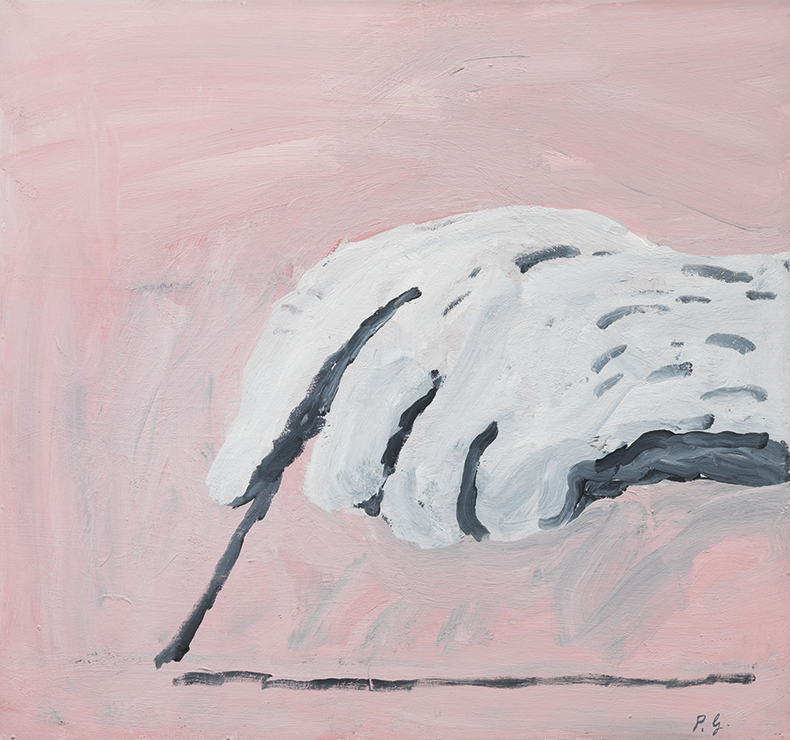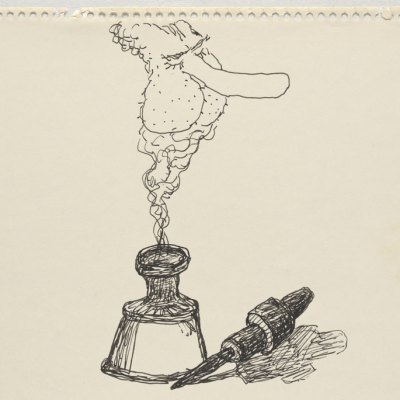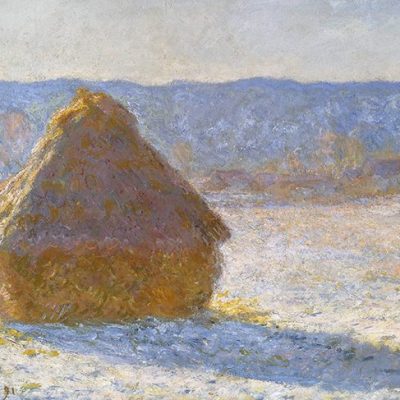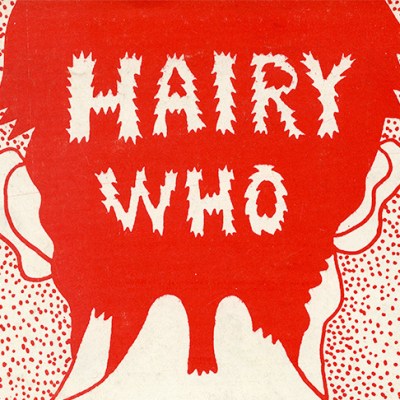From the May 2022 issue of Apollo. Preview and subscribe here.
There’s a word that almost always pops up in conversations about Philip Guston’s turn to a late, cartoonish mode: freedom. At the opening of the exhibition at Marlborough Gallery in October 1970, where Guston first showed all his hood paintings, Willem de Kooning embraced his friend and told him that the ‘real subject’ of his paintings was freedom. Guston liked to repeat this idea in the years that followed; by rejecting Greenbergian purity of abstraction and turning to existential figuration he clasped an exemplary, hard-won freedom.
Why did Guston adopt this word, so often an empty cliché, so keenly? It’s true that Guston freed himself from New York School for freedom. Not just artists, but the rest of us too – or anyone who feels oppressed or overwhelmed. When the exhibition ‘Philip Guston Now’ was postponed in 2020, at first for four years, now opening at the MFA Boston after a two-year delay (1 May–11 September) before it travels to other venues, the question of freedom was at the heart of the controversy. Whose freedom? What about the freedom not to be exposed to images of racial trauma? Or the freedom to be heard or represented in cultural institutions. Or the freedom to reinterpret Guston’s work amid a shifting social and political landscape. (The catalogue for the current exhibition performs that task very well.) A Barnett Newman show wouldn’t provoke debates about freedom, trauma or history. Guston’s freedom became our conundrum.
Caught (1970), Philip Guston. Denver Art Museum. Photo: Hauser and Wirth; ⓒ The Estate of Philip Guston

As a kid, Guston turned to comics to relieve himself of trauma. Born in Montreal in 1913, his family moved to Los Angeles when he was six. Four years later, Guston’s father hanged himself on the back porch of their house. A year or two later, Guston started doodling incessantly, encouraged by his mother and entranced by the cartoons of George Herriman and Bud Fisher. The world of Krazy Kat and other comics started to shape his imagination, followed by the Italian Renaissance, Giorgio de Chirico and Surrealism. Pictures offered an escape, the freedom to enter an imaginary world. In 1930, he went to the Otis Art Institute on a scholarship, but abandoned it in frustration after three months. That same year, he painted a panel of a hooded figure brandishing a whip beside a Black man tied with chunky ropes to a post. Both figures are fat-limbed, blocky, with a background of cartoonish clouds (they are also reminiscent of Piero della Francesca’s) and a blunt brick wall. It looks like a klutzy kid’s painting, yet it is bold and full of rage, auguring to a remarkable degree the late work. In 1933, alongside a group of panel paintings that addressed the case of the Scottsboro boys, a group of Black teens falsely accused of rape in 1931, the work was exhibited at the John Reed Club, which had Marxist affiliations and encouraged socially engaged art. The anti-communist ‘Red Squad’, a group that included members of the Los Angeles cops and the Ku Klux Klan, broke into the space and destroyed the paintings. Guston learned early in his life that making images in a polarised America is a precarious activity.
Fast forward 40 years to New York, October 1970, when Guston exhibited a group of paintings full of fat-fingered brutes, their hoods splattered with blood. These paintings are sodden with violence and anxiety. Their titles include Bad Habits, Caught (see cover) and Courtroom – titles that could also apply to the destroyed painting of his youth. Guston, famously, wanted to eschew purity and tell stories – mucky stories, full of malevolence and ambiguous beauty. Once he got started on the hood paintings, he felt like a movie director, he said, conjuring scenarios for his cast of thugs. He spent the mid to late 1960s in an existential crisis (though that might be true of his whole life), mulling over questions such as these: in a culture of perennial greed and violence, can art change anything? What gives a picture lasting value? Is abstraction the end of painting? How will viewers use or interpret your work once you’re dead? How did art change me?
‘To be free, the artist’s first duty’: this, reported Guston, is what de Kooning said at the Marlborough opening. While it’s hard to disagree with that statement, it could also serve as the mantra of the KKK figures in Guston’s paintings. It is our duty to be free. Free to do what we want. To be racist thugs. Free to ride around in our fat jalopies, drunk with turpitude. Free to destroy art. The hoods represent the fuck-you school of libertarian freedom, fuelled by the delusions of a bloated ego. One person’s freedom is another’s oppression. Freedom is too vague, too Janus-faced to be an unequivocal good. Without scepticism and humour, habit and humility, any bumptious thug can evoke freedom to justify a drive to purify and punish. When de Kooning told Guston his work was about freedom, the word sparked a different set of ideas. Freedom didn’t mean he could act with wilful abandon to assert his ego. Freedom meant he was free to honour his doubt and anxiety. He felt free to obey a set of feelings and ideas that he didn’t fully comprehend.
Paw (1968), Philip Guston. Photo: Hauser & Wirth; © The Estate of Philip Guston

In 1972, Guston took part in a conversation with the poet Clark Coolidge about a small acrylic painting called Paw (1968). He spoke about ‘that very exciting moment when it all comes together, you’re not even aware that you’re painting it. You don’t even see the brush. I don’t know how the hell it happens, but the brush just seems to go by itself like it has its own life.’ Freedom typically implies the engagement of the will, the harnessing of a conscious ego whose actions deserve praise or punishment. But here Guston describes a feeling of selflessness, as if possessed by an external force that directs his hand, or paw. The title, Paw, sounds like a riposte to Duchamp’s critique of painting. La patte (paw), Duchamp pointed out, is synonymous with the unique signature of a painter’s hand, a convention he wanted to destroy. Whereas Duchamp condemned ‘retinal’ art, prizing cognition over vision, Guston recuperates the paw, or ‘third hand’, as the spirit of painting itself, an unconscious drive at once animalistic and divine. The ‘paw’ stands for the awe of doodling on the wall of a cave, the origins of mimetic art. Simply by drawing a line, the hand provides the freedom to see the world anew.
Disembodied hands appear everywhere as animating forces in the hood paintings, conducting the pictorial space. In both Caught and Courtroom a giant gloved hand thrusts into the canvas, stage left, as if the Grand Inquisitor has appeared to confront the dull-eyed hoods just when they think they have got away with murder. In Dawn (1970), two hoods ride through town, the back of their jalopy overflowing with the detritus of a night of mayhem and violence. With all this villainy behind their backs, one hood raises a forefinger to point out the scene before them, where poles and power lines touched by songbirds frame the morning sun, which floats in the hazy pink light like a grapefruit. Gazing into the promise of a new day, the two savages pause, dumbstruck by beauty. Meanwhile, the gloved hand of the other thug points to the sky as if to say: Okay, we’ve got a few bloody corpses in the back of our car, but what about the infinite sky above us? Should we give some thought to eternity and justice? The poles and wire carve a picture from infinity, creating a space for contemplation. The painting depicts the murderers stemmed by beauty, which perhaps also induces a pang of conscience. In one of Guston’s greatest late paintings, The Line (1978), an enormous, ravaged hand, too fleshy to be merely divine, drops from the clouds to scrape a dark line across an empty patch of earth. A reprise of Paw, The Line confronts the artist’s mortality with a vivid feeling: there is, perhaps, salvation in a line.
The Line (1978), Philip Guston. Photo: Hauser & Wirth; © The Estate of Philip Guston

Several paradoxes give The Studio (1969), the most complex of all the hood paintings, an inexhaustible richness. Guston depicts himself, or some version of himself, painting a self-portrait, thus implicating himself in all these nefarious goings on. There are two prominent hands, each with a distinct character – one is a fleshy red thing, a sensitive paw with a paintbrush, while the other is a fat hand in a delicate white glove, pinching a thick cigarette from which rises a totem of sooty smoke. You could read the hands as symbols of painting’s double nature – if the red hand is the artist’s animalistic paw, what is the gloved one? The hand of a dilettante or a dandy? The hood evokes the history of social and racial injustices in America, the complicity of artists and the culture industry, but also the history of painting – de Chirico’s masked mannequins, Goya’s flagellants, the whip-brandishing Romans in Piero della Francesca’s Flagellation of Christ. The rising golem of smoke at the centre of the picture is a wispy residue of the New York School, a farewell to its metaphysical aspirations. Is the red hand the unconsciously driven ‘third hand’, following urges it can’t understand? In 1969, the same year he painted The Studio, Guston quipped that ‘every time I see an abstract painting now I smell mink coats’, and maybe the white-gloved hand is a similarly sardonic comment on wealth and privilege. But if we load up on the allegory too heavily we risk letting the painting ‘vanish into meaning’, a phrase of Paul Valéry’s that Guston loved to quote. The two hands in The Studio suggest irresolvable contradictions, testing the viewer’s freedom.
‘The self is freedom,’ wrote Soren Kierkegaard in The Sickness Unto Death. Guston called himself a ‘Kierkegaardian’ and throughout the mid 1960s he dipped into the Danish existentialist’s books, seeking ways to articulate his anxiety. If ‘the self is freedom’ sounds suspiciously like the motto of the all-American meathead, Kierkegaard’s meaning is quite the opposite. Freedom, for Kierkegaard, is the freedom to become a self, causing anxiety and despair: the self is despair. Yet ‘every minute that despair is kept open, there is the possibility of salvation as well’ Kierkegaard writes in the same book. ‘The sickness unto death’ is despair, the result of the dizziness of freedom we feel in the process of becoming, and the only solution Kierkegaard proposes is to ‘seek help’ by submitting to God. Guston adopted the structure of Kierkegaardian despair, but replaced God with painting, the ‘third hand’ of Paw and The Line. In Kierkegaard, Guston found a way to understand his anxiety – in fact, a justification for revelling in despair and anxiety, an emotion that allowed him to ‘keep learning how to play in new ways all the time’, as he said at a talk at Yale in 1972. In the closing lines of the holy sonnet ‘Batter my Heart, three-person’d God’, John Donne writes: ‘Take me to you, imprison me, for I / Except you enthral me, never shall be free, / Nor ever chaste, except you ravish me.’ Guston doesn’t want to be free, American-style. He wants to be ravished by a line, to recapture the feeling he had as a child.
The Studio (1969), Philip Guston. Photo: Hauser & Wirth; © The Estate of Philip Guston

As the hood paints the line on the canvas in The Studio, he witnesses himself come into being. He is an anonymous everyman, a bigot and an artist. But on the canvas he also watches beautifully ambiguous forms come to life, forms that echo through art history: the top of the hood resembles the arch of a gothic cathedral, while with the stitches on the hood he knocks out an abstract rhythm reminiscent of a late Mondrian. In Dawn, we see the aftermath of unspeakable crimes as two murderous brutes pause amid the beauty of the present moment and the perfect, spherical form of the sun. Step back to absorb the painting as a whole and it conveys a lightness and grace, with a palette that verges on the rococo. Likewise, look at The Studio’s tingle of blue sky and green at the back of the hood, that seems to represent the feeling of flow experienced by the painter: the warm Manhattan breeze with a hint of the divine behind the diabolical hand. In Dawn, the figures embody both the history of humanity’s relentless oppression and violence and also the precarious possibility of transcendence through looking. Dawn and The Studio are knottily irresolvable pictures, offering the looker both an adjuration and an avowal of the enduring power of mimetic art.
In the late 1960s, Guston turned to drawing in the aftermath of trauma. He had struggled in his personal life, the world beyond the studio was seething with violence and instability and he stopped painting for a couple of years after his retrospective at the Jewish Museum in 1966. He restored himself by drawing simple lines in ink: open-ended forms that might be a horizon, a jug, a book, a mug, some hair. The lines had lives of their own. He observed that they might start conversations with each other. When he started painting again, he painted mundane things: books, easels, mugs and buildings. And then he created his cast of hoods. He was casting off a self that had vanished into meaning. As a child sequestered in a closet, he could draw a line that might become a rope, an eye, a hand, a brush, a cloud; a mark of death or a mark of transcendence. When Guston places two marks together, he creates a conversation between the urgency to create and the necessity of ethical decisions. Gazing at that stark yet fruitful juxtaposition, he discovered for himself an uneasy freedom.
‘Philip Guston Now’ is at the MFA Boston from 1 May–11 September, then travelling to other venues.
From the May 2022 issue of Apollo. Preview and subscribe here.
.


